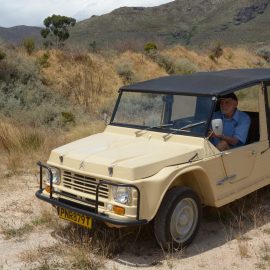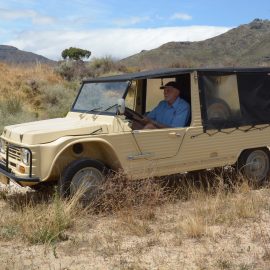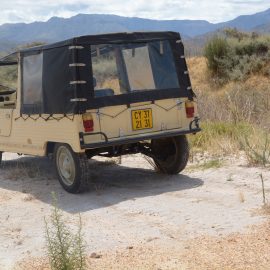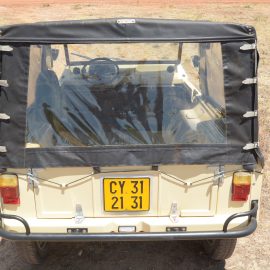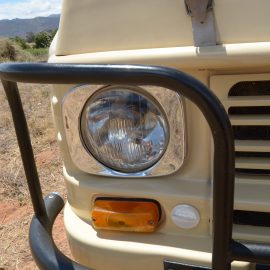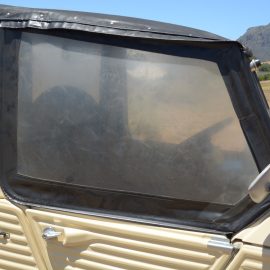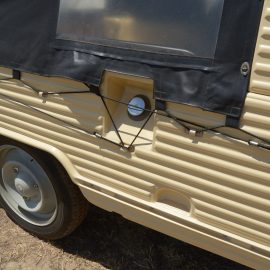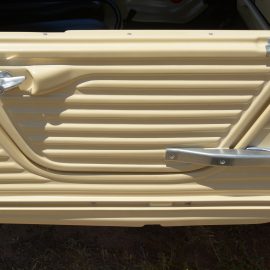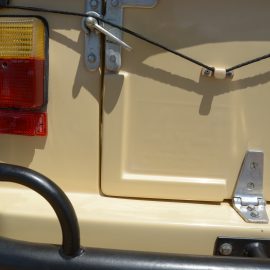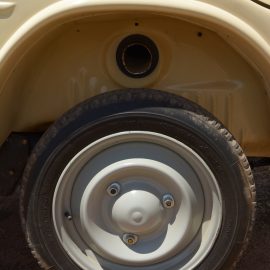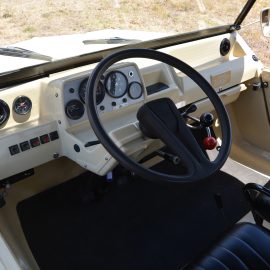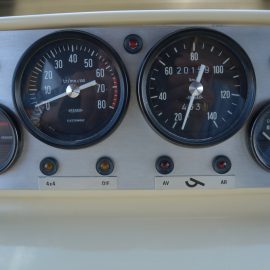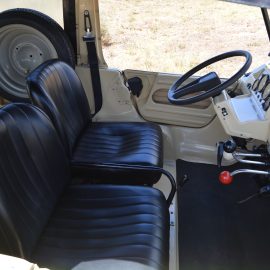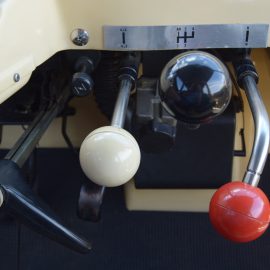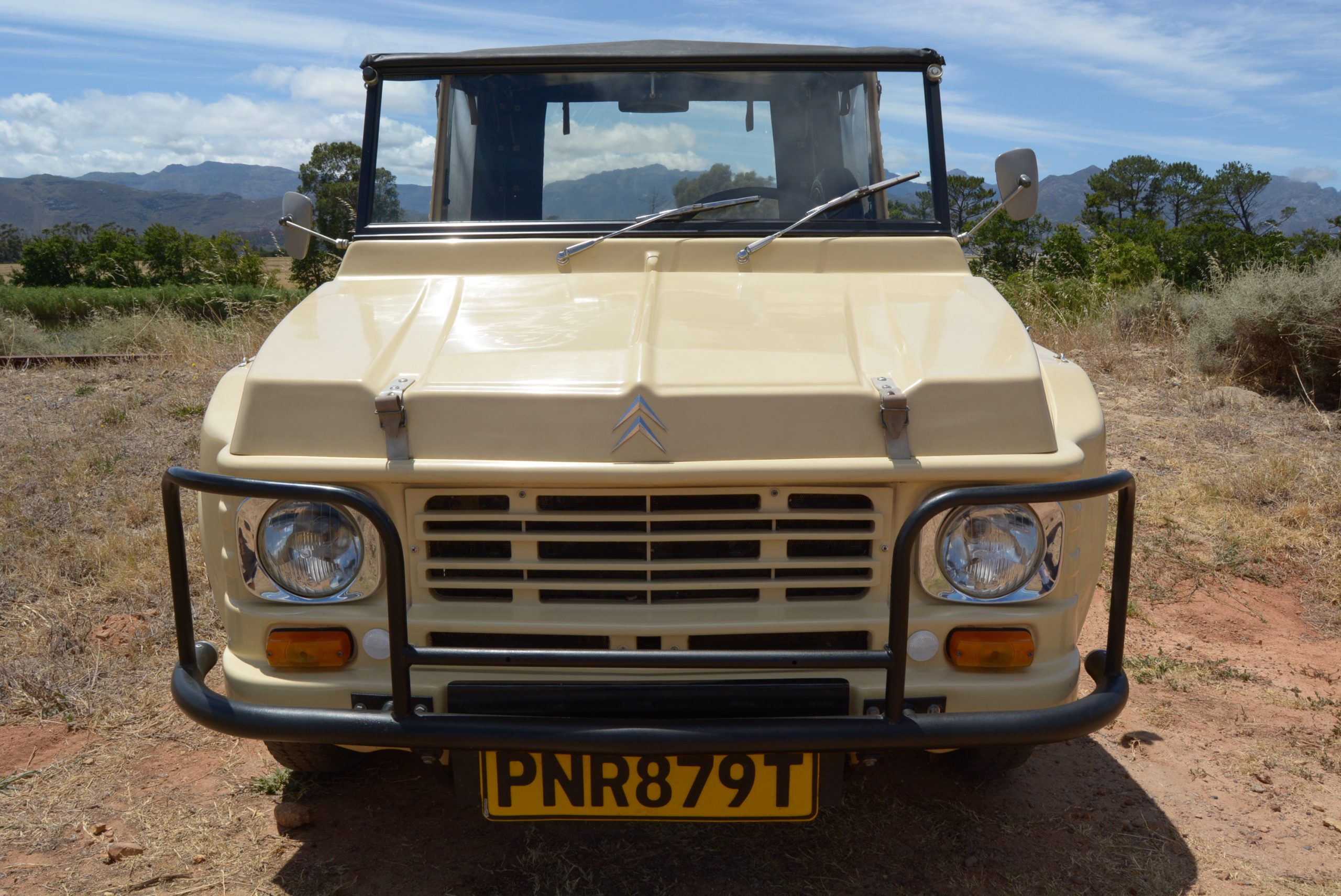
13 Dec Collection In Action: 1975 Citroën Méhari
If ever there was a vehicle that epitomised the adjective ‘utilitarian’, the Citroën Méhari is it. ‘Built for a purpose’ is perhaps too simplistic a phrase to describe what the Méhari represents but its bare-bones persona is, in reality, full of character. Mike Monk goes off-road with a development of a Citroën 2CV with links to the annual Dakar Rally…
The Citroën Méhari was the brainchild of an ace French WWII pilot Count Roland de la Poype, who was a member of the Normandie-Niemen fighter group that fought on the Soviet front. He was also a plastic industry pioneer, and in May 1947 formed the Société d’Etudes et d’Applications des Plastiques (SEAP), having had the vision that plastics and disposable packaging would become very important… Already a supplier to Citroën, SEAP developed the Méhari concept and presented it to the French car maker for approval, who launched it in May 1968 and it was to stay in production for 20 years.
Not surprisingly, SEAP moulded the open-top body in a light but durable plastic called Acrylonitrile Butadiene Styrene (ABS), and the colour was mixed in with the material. For customers, the range was limited. The colours were given quirky desert region names: green was called Montana (the only colour offered throughout the car’s lifespan), with Hopi (red) offered between 1968-75, Kalahari (beige) from 1968-77, Kirghiz (orange) 1969-87, Tibesti (light green) from 1976-79, Hoggar (beige) from 1978-87, Atacama (yellow) from 1980-87. Bucking the trend, a limited-edition model was made from 1983-87 and was rather boringly painted Azur blue.
The body was mounted on a tubular frame underpinned by the long-travel, all-independent suspension and running gear of the 2CV6. The Deux Chevaux’s engine was also utilised, the 602cc flat-twin delivering 22 kW at 5 750 r/min and 39 N.m of torque at 3 500. Transmission was the customary four-speed manual with Citroën’s oddball pull-push gear shift protruding straight out of the facia – first opposite reverse, second and third in a single plane, and fourth out on a limb. To the unfamiliar, it takes a while to get the hang of it, but eventually becomes less of a challenge.
The vehicle was named after a fast-running dromedary camel the likes of which were ridden by cavalrymen (méhariste) of the French Armée d’Afrique and Army of the Levant. The French Army purchased over 7 000 Méharis, some of which were modified to have 24V electric power. Apparently, because of their light weight, they were occasionally air-lifted and dropped off in combat zones. Oddly, the Irish Defence Force also bought 12 of them.
But it was not all work and no play. Following an initiative of the French Ministry of Youth and Sports, 25 Méharis took part in Liége-Dakar-Liège Rally in 1969, where 100 youngsters crewed the vehicles from Liége to Dakar, and another 100 brought them back. Similar exercises were carried out on the Paris-Kabul-Paris Rally in 1970 and the Paris-Persepolis-Paris Rally in 1971. Méharis also provided medical support assistance in the gruelling 1980 Paris-Dakar.
In 1979, a four-wheel drive version (not to be confused with the twin-engined Citroën Sahara 4×4) was introduced for a limited period. The normal transmission was supplemented with a three-speed transfer gearbox “for crossing slopes up to 60%”. At the time, the all-wheel drive Méhari was one of the few 4x4s with four-wheel independent suspension, and also boasted disc brakes all round.
FMM’s Hoggar Beige example is in superb condition for a 47-year-old off-roader. The elaborately-hinged shallow doors give access to a spacious cockpit housing a pair of bucket seats. Like all Méharis, it is left-hand drive and the trademark Citroën single-spoke steering wheel is noticeably near horizontal. The pedals are offset to the centre of the vehicle – the brake and accelerator are virtually in the centre to the right of the steering column – so the driving position is far from ideal, but such is the character of the car that it does not become an issue.
Measuring 3 520 mm long, 1 530 mm wide and riding on a 2 400 mm wheelbase, the compact Méhari is rectangular in plan view. With the fabric roof and sides in place it stands 1 640 mm high, but with everything removed and the windscreen folded flat, the Méhari is no more than waist high. It is highly manoeuvrable, with a usefully small turning circle.
Despite its modest power output, because its kerb weight is around 570 kg, the Méhari is still relatively lively, a sensation accentuated by the minimalist weather protection that affords the ‘wind in the hair’ pleasures of al fresco motoring. Mind you, on the day of my drive, having the fabric roof erect was a blessing in the middle of a 38-degree day in the grounds of the FMM’s L’Ormarins Estate. The open cockpit sides contributed to a superb view out. Just as well, the plastic in the removable side windows is almost opaque.
On the open road it is easy enough to keep the Méhari at a steady cruising pace, but off the beaten track you have to keep the flat-twin’s revs up to avoid getting bogged down. The ride is, as one would expect, pleasantly supple, but over rough ground the body rattles and squeaks a bit but again no more than one would expect. You would have to be young to drive from Liége to Dakar and back without complaint, but it is all part of the adventure that the youngsters who undertook those rally-raids must have enjoyed.
A total of 144 953 Méharis were built, the best year being 1974 when 13 910 were produced. Apart from France, it was built in factories in Belgium, Spain, Portugal, Yugoslavia, Uruguay and Argentina, where the body was made from glass fibre. Today, they make fun restoration projects with engine and suspension parts all still readily available. However, 4×4 transmission components are practically unobtainable. Replacement bodies can be ordered, but are only available in white.
With its basic construction, the Méhari has proven to be amazingly versatile, capable and durable. This is one camel that does not give its rider the hump…
The 1975 Citroën Méhari is currently on view in Hall B.




